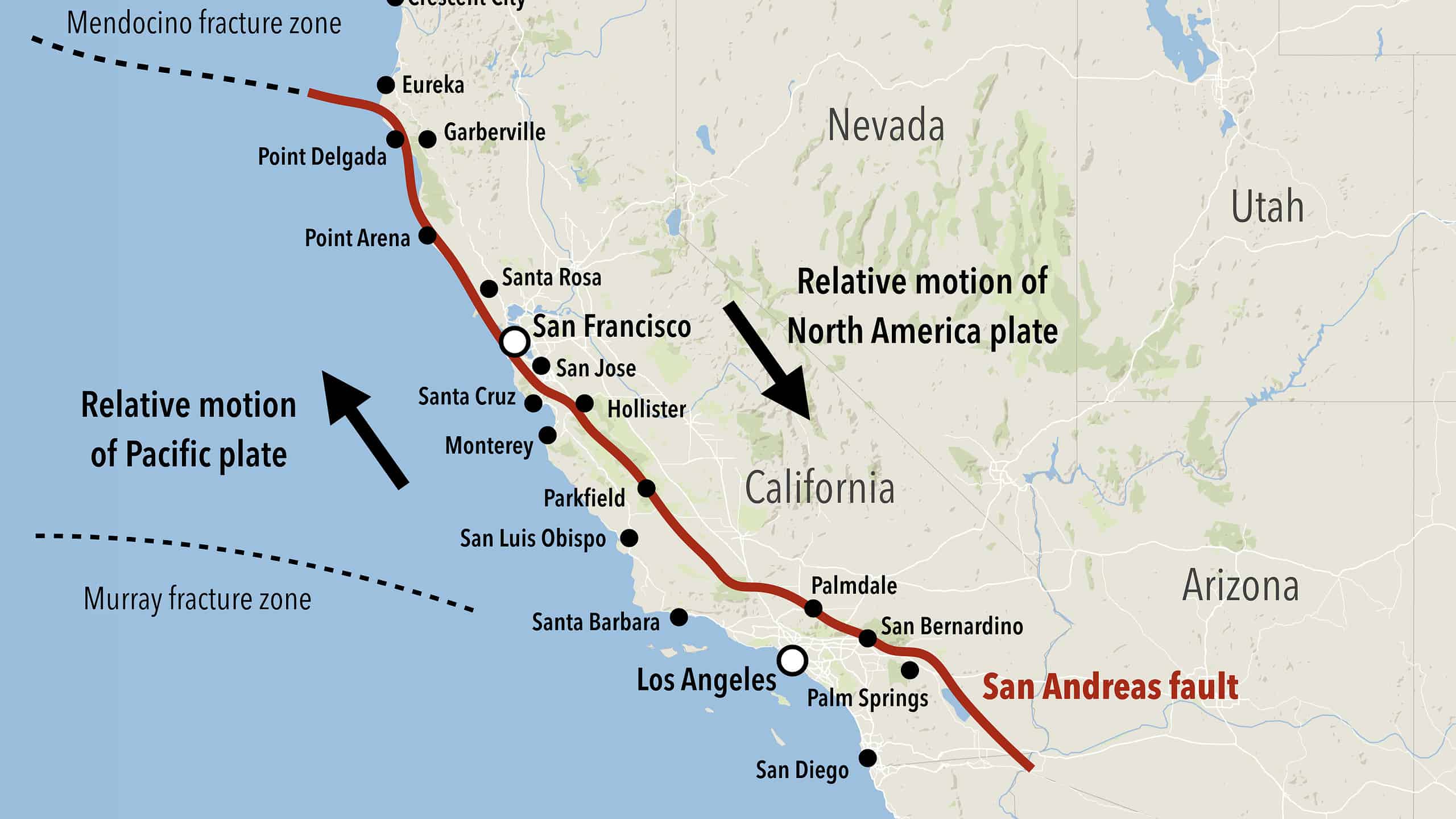
Discover How and When the San Andreas Fault Was Formed AZ Animals
what type of fault is the San Andreas? A San Andreas earthquake would be classified as occurring on a strike-slip fault. Strike-slip faults are found along boundaries of tectonic plates sliding past each other. A strike-slip fault is a vertical fracture in the earth's crust that creates horizontal motion, along the line of the fault.
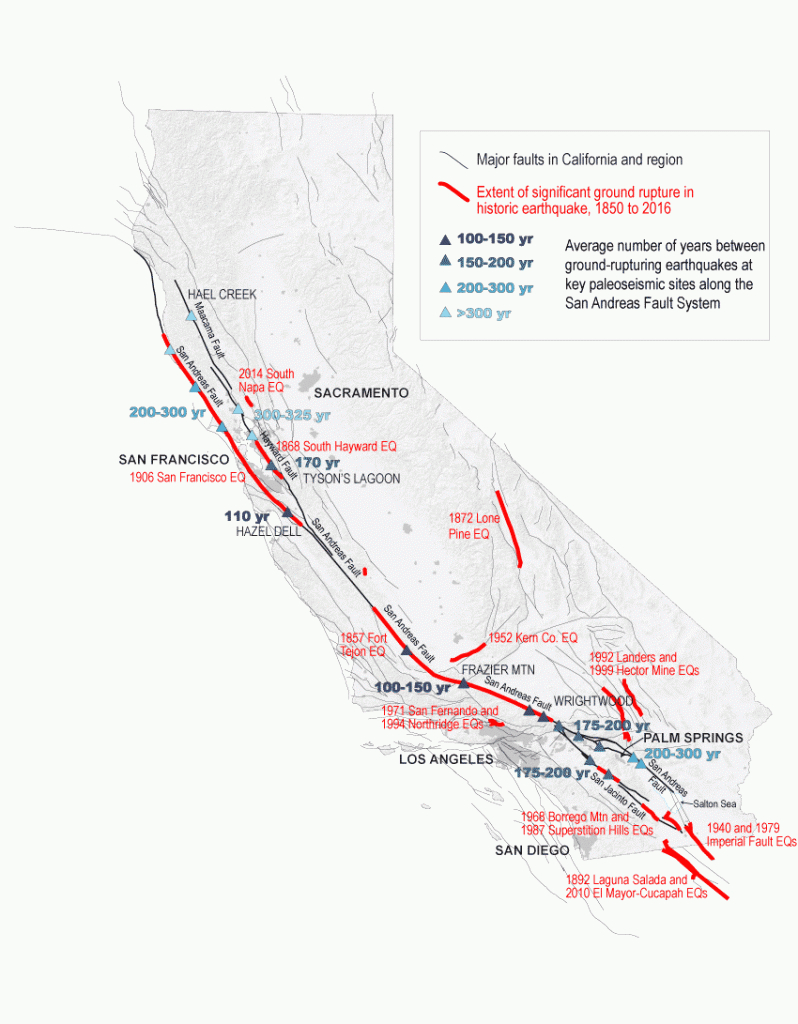
Map Of The San Andreas Fault In Southern California Printable Maps
The most common map types are: Road Maps: These are the most familiar kind of map, the kind that you have in your car. They are base maps with cities, counties, state boundaries, cities and roads. Topographic Maps: Base maps with elevation contours.
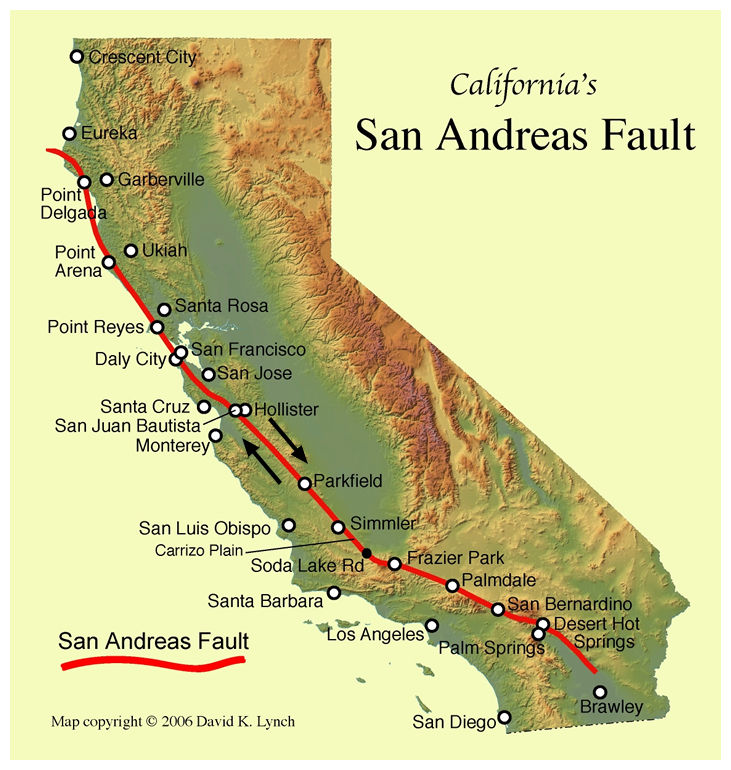
'Imagine America without Los Angeles' Expert warns Southern California
According to the United States Geological Survey (USGS), the San Andreas Fault Zone (SAFZ) is the main part of the boundary between the Pacific tectonic plate on the west and the North.
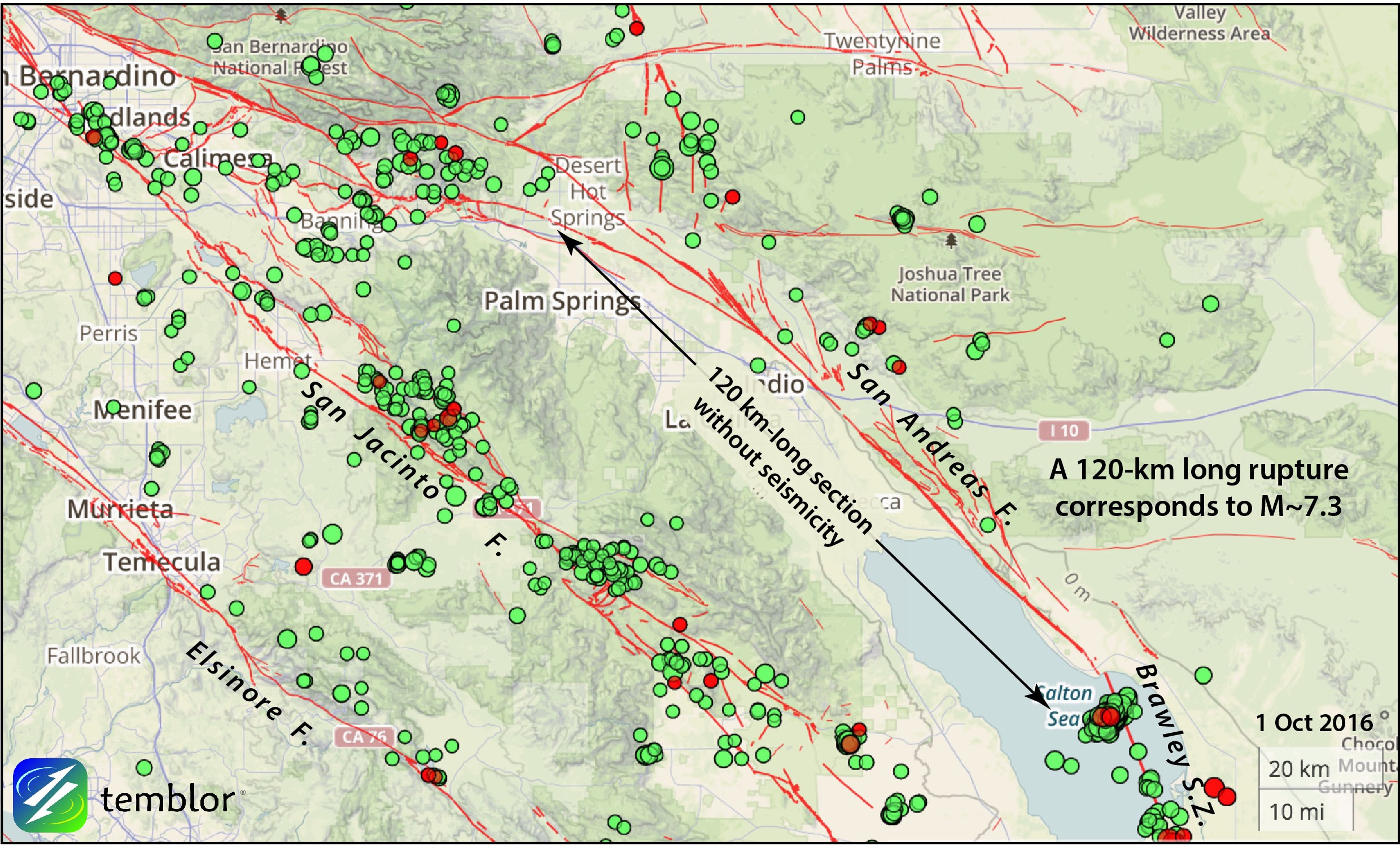
California Earthquake Advisory ends without further rumbling
The detailed report examines the effects of a hypothetical 7.8 quake that strikes the Coachella Valley at 10 a.m. on November 13, 2008. In the following minutes, the earthquake waves travel across.
:max_bytes(150000):strip_icc()/sanandreasmap-1000x1500-57ec123c3df78c690f4d0832.jpg)
Pictures of the San Andreas Fault in California
Scientists have a good big picture understanding of the San Andreas Fault Zone (SAFZ). The SAFZ started moving about 28-30 million years ago and has horizontally slipped (transform motion) a total of about 300-350 km (186-220 mi) since it began moving. The SAFZ is the main part of the boundary between the Pacific tectonic plate on the west side.
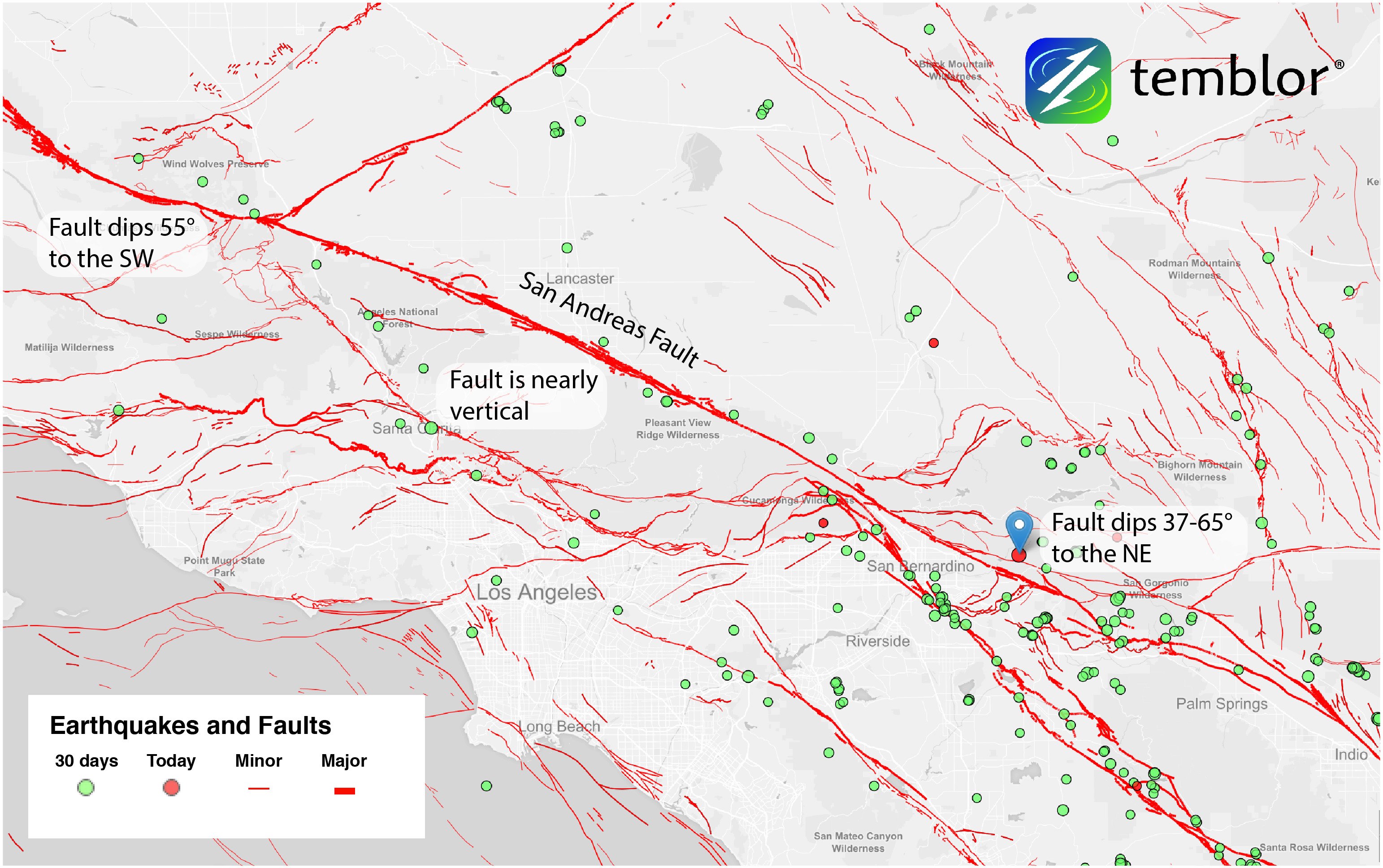
San Andreas Fault earthquake wakes San Bernardino and Riverside
LENGTH: 1200 km 550 km south from Parkfield; 650km northward NEARBY COMMUNITIES: Parkfield, Frazier Park, Palmdale, Wrightwood, San Bernardino, Banning, Indio LAST MAJOR RUPTURE: January 9, 1857 (Mojave segment); April 18, 1906 (Northern segment) SLIP RATE: about 20 to 35 mm per year

San Andreas San andres, California coast road trip, San andreas fault
The quake was centered near where the San Andreas and San Jacinto earthquake faults come together. The area was the site of a magnitude-5.2 earthquake in 1970. The main quake came 20 minutes after.

Sciency Thoughts Magnitude 4.1 Earthquake in Napa County, California.
By presenting the San Andreas Fault map as interactive web-based imagery, anyone can pinpoint the fault anywhere along its trace. And by using a thin red line, the underlying landscape features are minimally obscured.

Small earthquake near the Big Bend of the San Andreas Fault
According to the USGS, there are seven "significant" faults in the Bay Area: the San Andreas Fault, the Calaveras Fault, the Hayward Fault, the Concord-Green Valley Fault, the.
San Andreas Fault r/MapPorn
The San Andreas Fault is known as a transform fault, which is where two of the earth's plates meet. In this case, it's where the Pacific Plate and the North American Plate come together. Geologists divide the San Andreas Fault into three parts: the Southern San Andreas Fault, the Central San Andreas Fault, and the North San Andreas Fault.
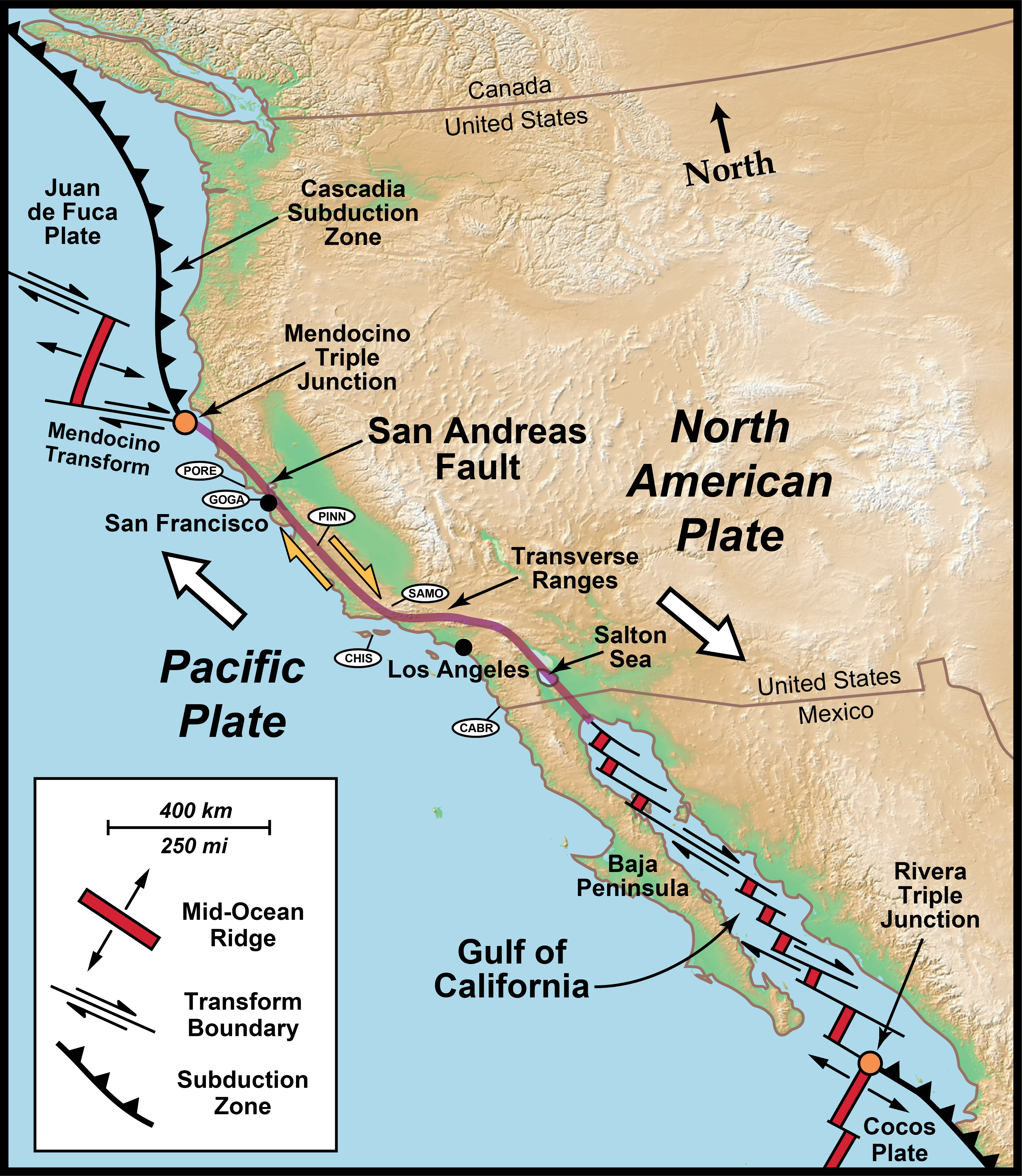
San Andreas Fault Line Fault Zone Map And Photos Gambaran
Cities Buffer For this project, I chose to only look at cities within California that had a population greater than 100,000 people. One reason for this was because there would be too many cities to run analysis on, and another reason was cities with higher populations would have more people affected from an earthquake than small towns.
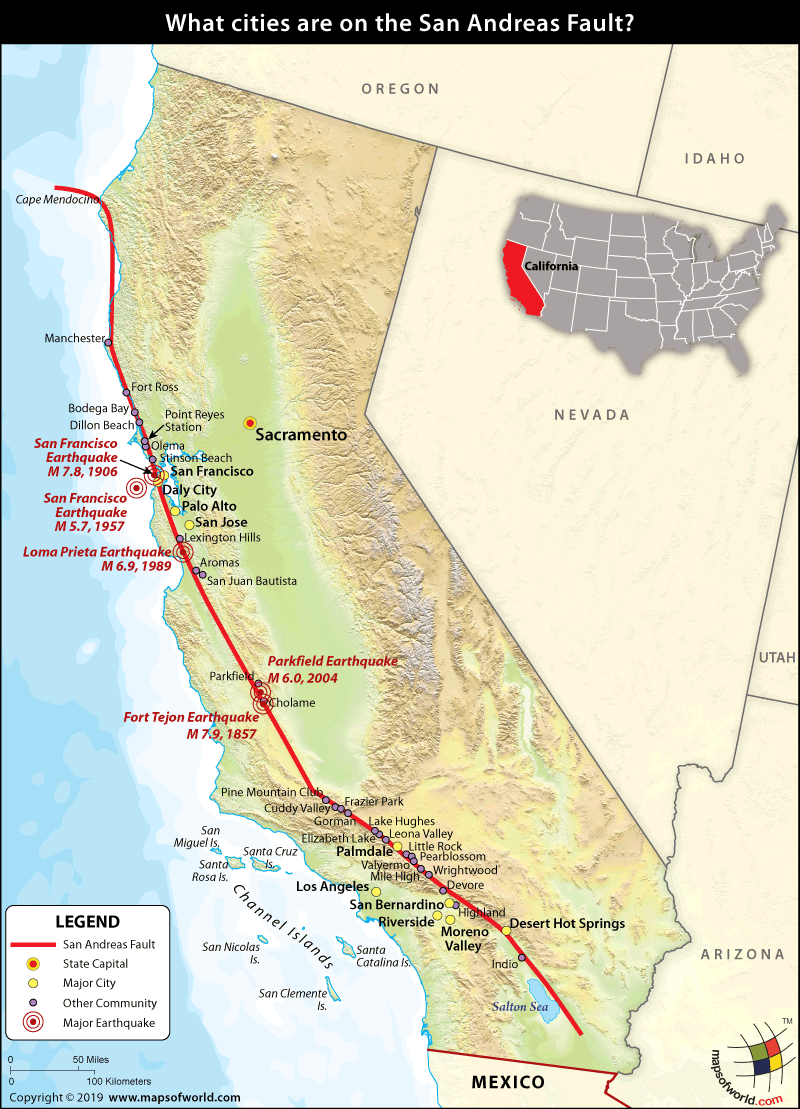
What Cities are on the San Andreas Fault? Answers
The San Andreas Fault is the sliding boundary between the Pacific Plate and the North American Plate. It slices California in two from Cape Mendocino to the Mexican border. San Diego, Los Angeles and Big Sur are on the Pacific Plate. San Francisco, Sacramento and the Sierra Nevada are on the North American Plate.
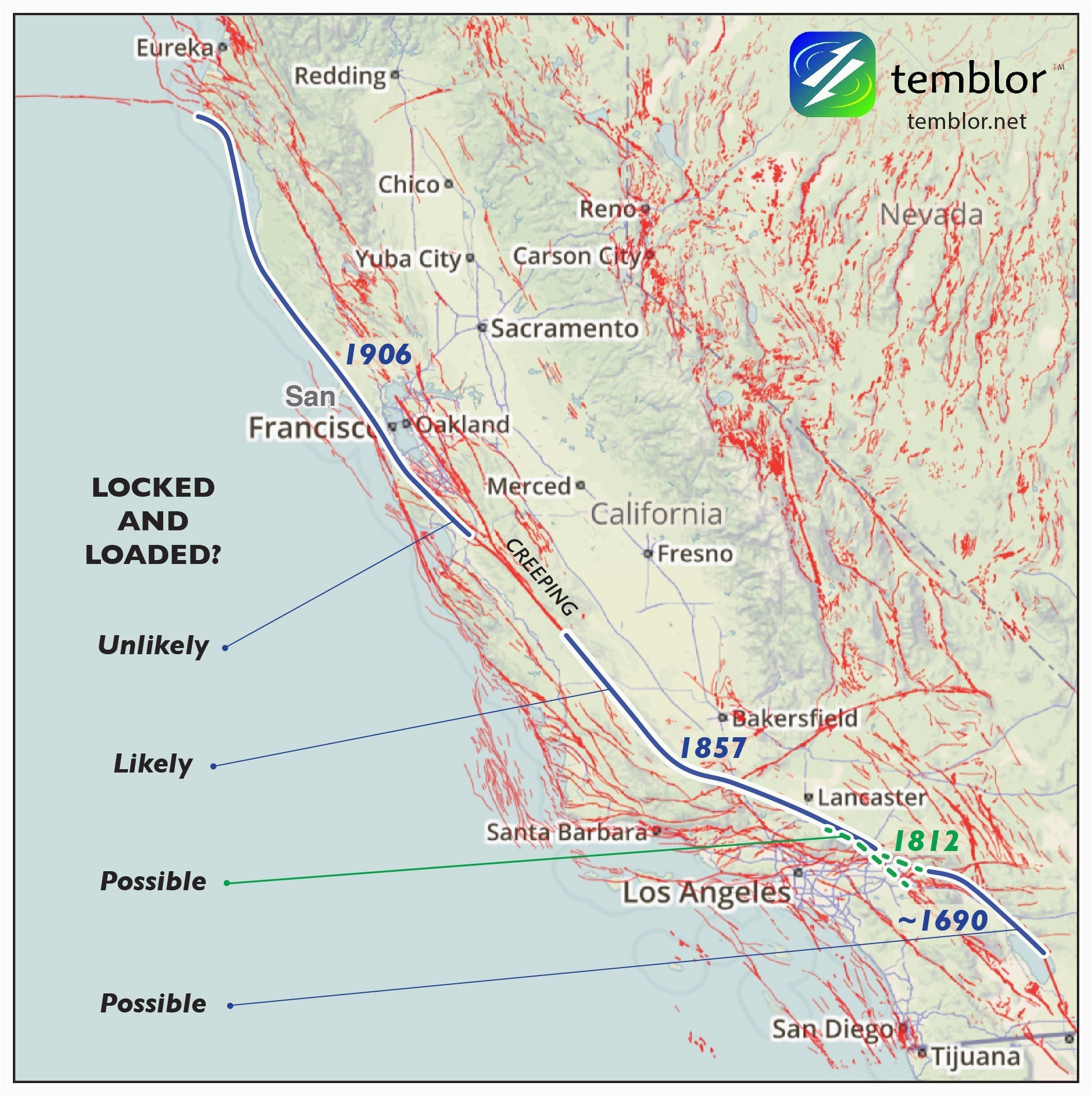
Map Of California Earthquake Fault Lines secretmuseum
Southern California is home to nearly 24 million people and countless visitors who live, recreate, consume resources, and face the risk of natural hazards in the region. This project produces high-quality, multi-purpose geologic maps, databases, and reports that portray our understanding of the region's four-dimensional geologic framework.

USGS Study Finds New Evidence of San Andreas Fault Earthquakes
>99% Chance of 1 or more M6.7 or greater earthquakes striking CA* 30 Miles Most Californians live within 30 miles of an active fault 15,700 Known faults in California (and scientists continue to discover new ones)
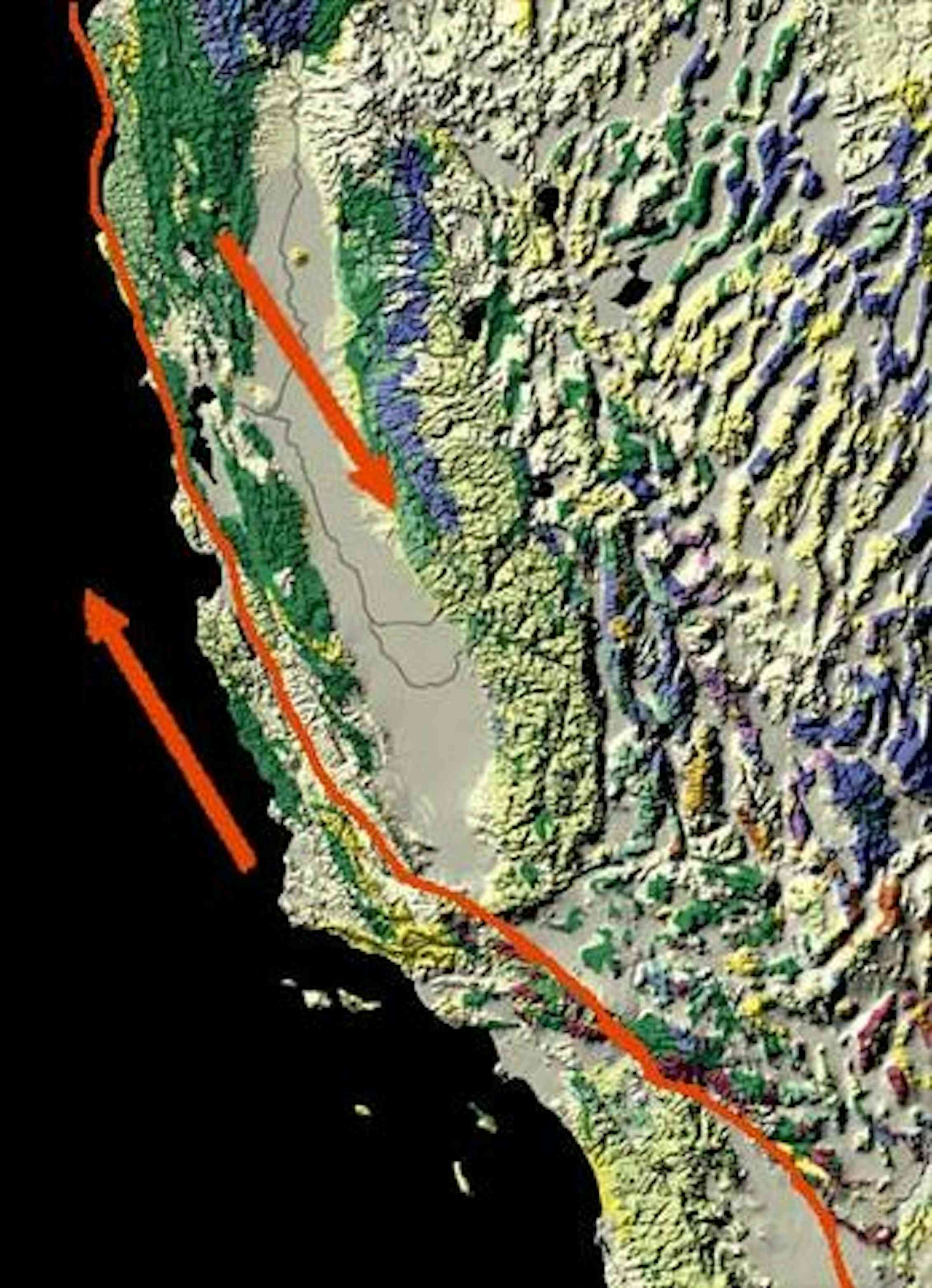
The San Andreas fault is about to crack here's what will happen when
LOS ANGELES (AP) — A magnitude 4.2 earthquake was felt widely across the nation's second largest city Friday and shook things off shelves near the epicenter in a small mountain community east of Los Angeles, but there were no reports of major damage or injuries. The U.S. Geological Survey said the 10:55 a.m. quake was centered about a mile.
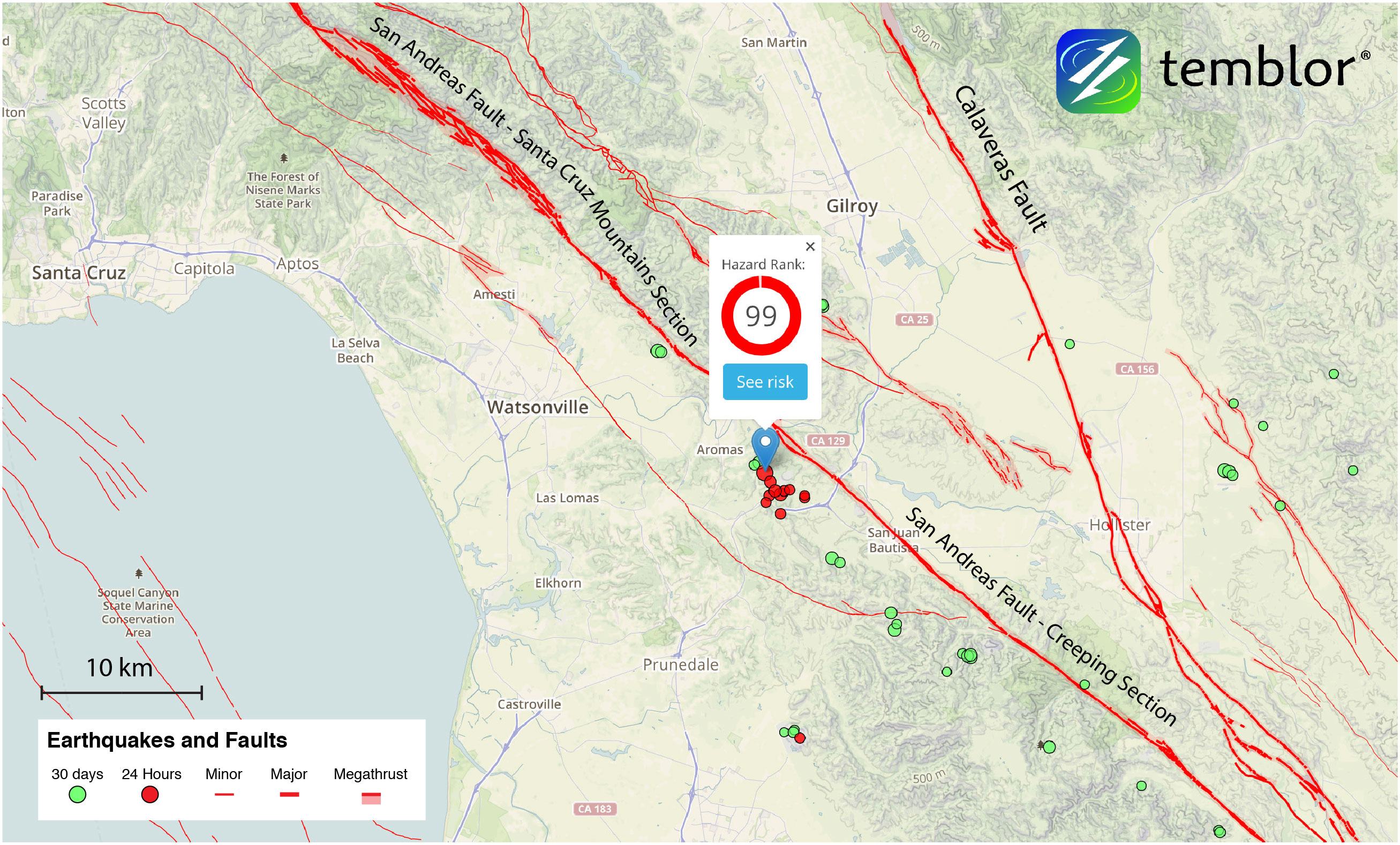
sanandreasfaultmap
Southern end of the San Andreas Fault from near Mecca to Bombay Beach. Since the formation of the fault, it has moved quite a bit. Over the last 30 million years, it has shifted over 150 miles. Extreme examples of this offset can be found in the rocks within Pinnacles National Park near Soledad, CA and the Neenach Volcanics near Gorman, CA.